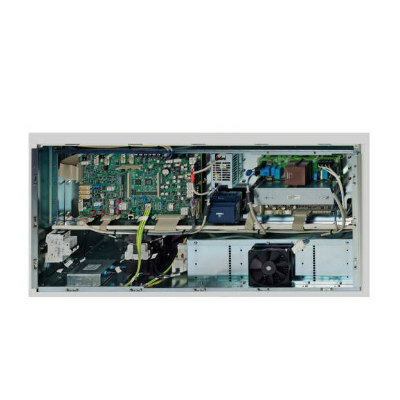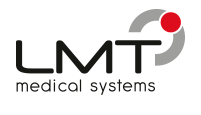Global AI in Medical Diagnostics Market to Be Driven by Demand for Image Recognition in Radiology
|
By MedImaging International staff writers Posted on 12 Oct 2021 |

The global artificial intelligence (AI) in medical diagnostics market is expanding with early disease detection being one of its key applications and image recognition becoming a compelling consumer proposition that is driving AI players to zealously invest in deploying AI in radiology.
These are the latest findings of TMR Research (San Francisco, CA, USA).
AI has shown transformative potential in medical and healthcare industry. In particular, the effects of AI penetration in medical diagnostics have expanded the canvas for offering high-quality patient care. Early disease detection is one of the key applications where AI players are exploring game-changing potential and are zealously investing in deploying AI in radiology to complement conventional procedures. Image recognition is perhaps the most compelling consumer proposition in the AI in medical diagnostics market. Algorithms have been learning and unlearning and relearning signs of diseases in millions of images clinicians extract from the target population. A key trend has been outsourcing these to developing economies to save cost.
There has been a flurry of activities in deep learning algorithms to advance access to quality diagnostics and at a low cost. This can be lifesaving in the case of chronic conditions that may become fatal if not diagnosed early. Patients who are at the receiving end are those with significant cardiovascular diseases risks. Further, another factor that is driving research in AI in medical diagnostics market is the need for improving the accuracy of diagnosis, either through single or several images. The internet of medical things is making vast strides, as evident in the proliferation of AI-based apps. AI companies are keen on bridging the vast gap between demand and supply of radiologists while simultaneously reducing the cost of radiological examinations. On the whole, the key clinical proposition of AI in healthcare is the use of AI apps in the detection of diseases and advance patient-centered care.
Several recent research and development projects, including those pioneered by stalwart technology companies, show rising huge dollar inflows into the AI in medical diagnostics market such as the advent of AI-based apps that improve breast cancer detection accuracy. The prospects of AI-driven software in cancer detection present vast possibilities. Another area that holds strong prospects is the use of AI for detecting skin problems from the images of skin lesions. Such developments are expected to open up new avenues for various industry stakeholders in the AI in medical diagnostics market. Companies are also intensifying R&D efforts for leveraging the potential of AI in multiple retinal diseases.
Geographically, North America is a highly lucrative region, fuelled largely by increasing R&D in developing AI-apps for reducing the burden and prevalence of various chronic diseases. The North American market is expected to witness vast revenue streams from the efforts by players in the ecosystem to bring AI and deep learning systems from the bench to the bedside, notably in diseases that are more prevalent in countries such as the US. Asia Pacific is also a promising regional market for AI in medical diagnostics and is anticipated to make rapid strides in the near future, fueled by the growing penetration of AI in healthcare.
Related Links:
TMR Research
Latest Imaging IT News
- New Google Cloud Medical Imaging Suite Makes Imaging Healthcare Data More Accessible
- AI-Based Mammography Triage Software Helps Dramatically Improve Interpretation Process
- Artificial Intelligence (AI) Program Accurately Predicts Lung Cancer Risk from CT Images
- Image Management Platform Streamlines Treatment Plans
- AI-Based Technology for Ultrasound Image Analysis Receives FDA Approval
- AI Technology for Detecting Breast Cancer Receives CE Mark Approval
- Digital Pathology Software Improves Workflow Efficiency
- Patient-Centric Portal Facilitates Direct Imaging Access
- New Workstation Supports Customer-Driven Imaging Workflow
Channels
Radiography
view channel
Novel Breast Imaging System Proves As Effective As Mammography
Breast cancer remains the most frequently diagnosed cancer among women. It is projected that one in eight women will be diagnosed with breast cancer during her lifetime, and one in 42 women who turn 50... Read more
AI Assistance Improves Breast-Cancer Screening by Reducing False Positives
Radiologists typically detect one case of cancer for every 200 mammograms reviewed. However, these evaluations often result in false positives, leading to unnecessary patient recalls for additional testing,... Read moreMRI
view channel
PET/MRI Improves Diagnostic Accuracy for Prostate Cancer Patients
The Prostate Imaging Reporting and Data System (PI-RADS) is a five-point scale to assess potential prostate cancer in MR images. PI-RADS category 3 which offers an unclear suggestion of clinically significant... Read more
Next Generation MR-Guided Focused Ultrasound Ushers In Future of Incisionless Neurosurgery
Essential tremor, often called familial, idiopathic, or benign tremor, leads to uncontrollable shaking that significantly affects a person’s life. When traditional medications do not alleviate symptoms,... Read more
Two-Part MRI Scan Detects Prostate Cancer More Quickly without Compromising Diagnostic Quality
Prostate cancer ranks as the most prevalent cancer among men. Over the last decade, the introduction of MRI scans has significantly transformed the diagnosis process, marking the most substantial advancement... Read moreUltrasound
view channel
Deep Learning Advances Super-Resolution Ultrasound Imaging
Ultrasound localization microscopy (ULM) is an advanced imaging technique that offers high-resolution visualization of microvascular structures. It employs microbubbles, FDA-approved contrast agents, injected... Read more
Novel Ultrasound-Launched Targeted Nanoparticle Eliminates Biofilm and Bacterial Infection
Biofilms, formed by bacteria aggregating into dense communities for protection against harsh environmental conditions, are a significant contributor to various infectious diseases. Biofilms frequently... Read moreNuclear Medicine
view channel
New SPECT/CT Technique Could Change Imaging Practices and Increase Patient Access
The development of lead-212 (212Pb)-PSMA–based targeted alpha therapy (TAT) is garnering significant interest in treating patients with metastatic castration-resistant prostate cancer. The imaging of 212Pb,... Read moreNew Radiotheranostic System Detects and Treats Ovarian Cancer Noninvasively
Ovarian cancer is the most lethal gynecological cancer, with less than a 30% five-year survival rate for those diagnosed in late stages. Despite surgery and platinum-based chemotherapy being the standard... Read more
AI System Automatically and Reliably Detects Cardiac Amyloidosis Using Scintigraphy Imaging
Cardiac amyloidosis, a condition characterized by the buildup of abnormal protein deposits (amyloids) in the heart muscle, severely affects heart function and can lead to heart failure or death without... Read moreGeneral/Advanced Imaging
view channel
New AI Method Captures Uncertainty in Medical Images
In the field of biomedicine, segmentation is the process of annotating pixels from an important structure in medical images, such as organs or cells. Artificial Intelligence (AI) models are utilized to... Read more.jpg)
CT Coronary Angiography Reduces Need for Invasive Tests to Diagnose Coronary Artery Disease
Coronary artery disease (CAD), one of the leading causes of death worldwide, involves the narrowing of coronary arteries due to atherosclerosis, resulting in insufficient blood flow to the heart muscle.... Read more
Novel Blood Test Could Reduce Need for PET Imaging of Patients with Alzheimer’s
Alzheimer's disease (AD), a condition marked by cognitive decline and the presence of beta-amyloid (Aβ) plaques and neurofibrillary tangles in the brain, poses diagnostic challenges. Amyloid positron emission... Read more.jpg)
CT-Based Deep Learning Algorithm Accurately Differentiates Benign From Malignant Vertebral Fractures
The rise in the aging population is expected to result in a corresponding increase in the prevalence of vertebral fractures which can cause back pain or neurologic compromise, leading to impaired function... Read moreIndustry News
view channel
Bayer and Google Partner on New AI Product for Radiologists
Medical imaging data comprises around 90% of all healthcare data, and it is a highly complex and rich clinical data modality and serves as a vital tool for diagnosing patients. Each year, billions of medical... Read more



















